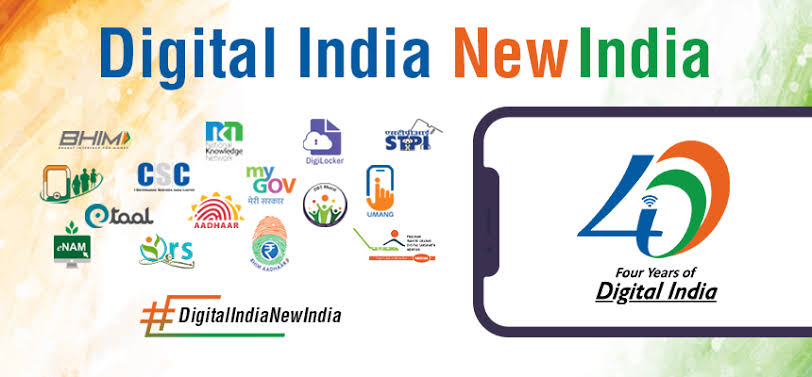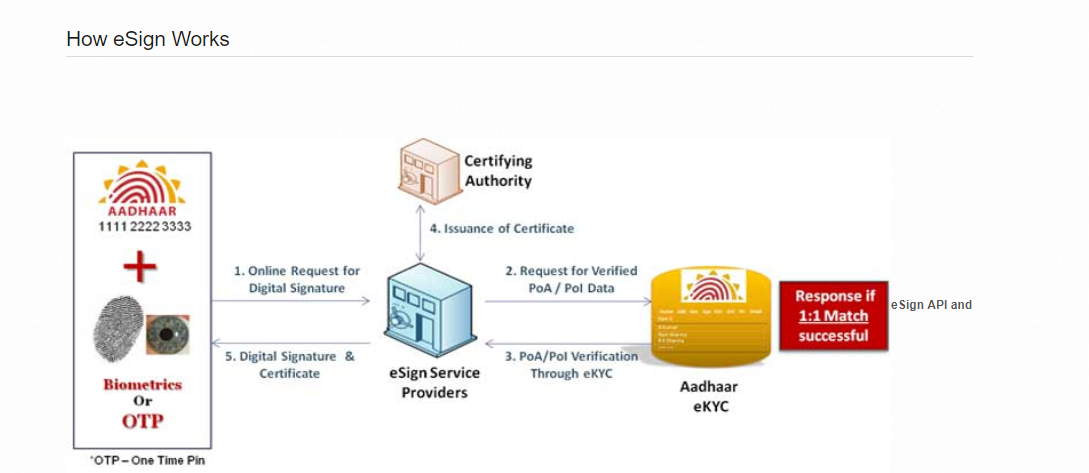Digital India was rolled out to transform India into a digitally empowered society. The program has been envisaged as the facilitator to make India’s governance electronically compliant. The program was launched by Prime Minister Narendra Modi on 1 July 2015.
Contents
Objective
- To empower the country’s population digitally and build a governance model based on the electronic infrastructure.
- To facilitate E-governance in the nation to advance the implementation of the programs and policies effectively.
- To bring citizens closer to government schemes through the use of electronic medium and online mode.
- To remove the hassles of off-line delivery of services.
- To encourage digital literacy among the masses and build a new India on the pillars of knowledge.
- To promote the concept of collaborative and participative governance through the continuous interaction of people and state.
- To provide easy access to the services of the Common Service Centre.
- To leverage the technology of GIS for decision support systems and development.
- To make all digital resources universally accessible to everyone in the nation.
Electronics Manufacturing
This component is aiming to target NET ZERO Imports. This encompasses tax incentives, skill development, and procurement by government agencies.
Information Technology for Jobs
This aims to educate 1 crore students from smaller towns & villages for IT sector jobs for over 5 years. Along with it, BPOs would be set up in every north-eastern state to facilitate ICT enabled growth in these states. The Department of Electronics and Information Technology will be the nodal department for this scheme.
Early Harvest Programs
This component aims to build an integrated electronic infrastructure and promote the concept of digital governance in every corner of the administration. Biometric attendance and setting up Wi-Fi come under this mission.
Major Initiatives under Digital India Initiative
E-signature
It is to offer on-line service to citizens for the instant signing of their documents securely in a legally acceptable form. Aadhar based authentication is used to upload signature electronically.
Digi-locker
It offers a dedicated personal storage space that is linked to each resident’s Aadhaar number. It can be used to securely store e-documents.
Digital Saksharta Abhiyan (DISHA)
It aims to impart IT training to the IT-illiterate population. The program aims to educate 52.5 lakh persons, including Anganwadi and ASHA workers and authorized ration dealers in all the States/UTs across the country.
National Optical Fibre Network
This scheme is an ambitious initiative to trigger a broadband revolution in rural areas.
PRAGATI (Pro-Active Governance And Timely Implementation)
It is a multi-purpose and multi-modal platform that is aimed at addressing common man’s grievances and simultaneously monitoring and reviewing important programs and projects of the Government of India as well as projects launched by State Governments.
DigiSevak
The platform plans to connect citizens with the government for various Digital India activities by Ministries and agencies of government. It also offers a system for end to end management of volunteering activities.
IndiaStack
It is a set of APIs that allows various stakeholders such as governments, businesses, startups, and developers to utilize a unique digital Infrastructure to solve India’s problems towards paperless, and cashless service delivery.
BHIM app
It is an app to enable digital payments and promote fast, secure, reliable cashless payments through your mobile phone. BHIM app was used to facilitate 913 million transactions in 2017-18.
To know more about the BHIM app, click here.
Recently, BHIM 2.0 was also launched with upgraded features.
Progress Card of Digital India Mission
- About 1.19 lakh gram panchayats have been connected through the optical fiber under BharatNet.
- A total of 3.65 lakh Common Service Centres are functioning which are providing about 350 plus government services.
- 123 crore people have been provided biometric identity and seamless access to many government services.
- 2.30 crore people have been enrolled under the DISHA program, of which 22 lakh have already completed training.
- A whopping figure ofRs. 7.45 lakh crore transferred to beneficiaries’ bank accounts, thus eliminating the need for middlemen.
- 2.23 lakh smartphones and biometric devices have been connected through the app, through the Indian Post Payment Bank system providing doorstep banking in rural India.
- More than 1.4 crore scholarship applications registered on National Scholarship Portal.
- 4.38 lakh SHGs and 46.83 lakh women members have been covered under the E-Shakti application.
- About 4.5 crore downloads of the BHIM app have been recorded till now.
As of now, more than 2300 services have been available on the digital platform.
In the same line of digital governance, the Ministry of Electronics and Information Technology (MeitY) and Google have signed a statement to roll-out the ‘Build for Digital India’ program. The initiative aims to provide college students a chance to innovate and produce some good technology solutions for major social challenges of India.
Conclusion
India’s journey to becoming a digitally connected economy is a very ambitious milestone that the country has set itself onto. This has the potential of improving the social and economic condition of people through innovation and development.
Presently India possesses a large workforce, especially the younger population. In this case, the country can become a super-power if it stays well equipped with research, innovation and technological solutions.
In this regard, Digital India provides the much-needed leverage of the variety of schemes within its umbrella fold that has the capacity to transform India’s traditional governance method.


